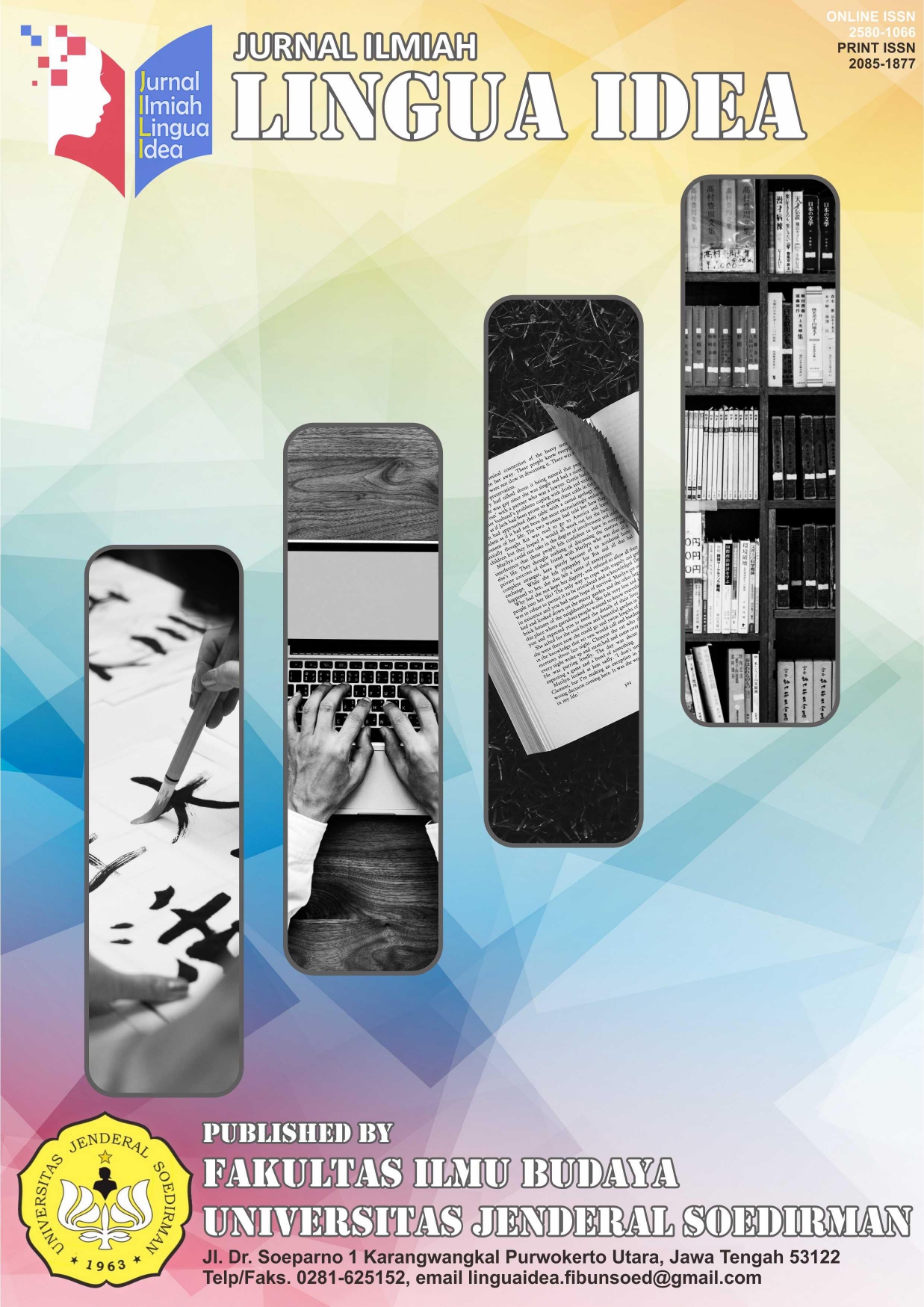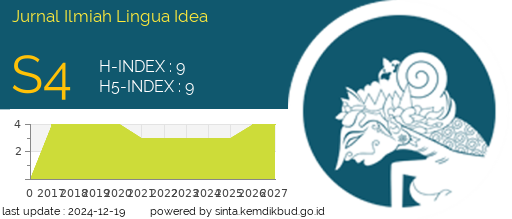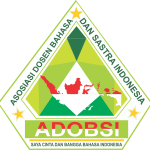Language Production in a Parkinson's Disease Patient in Banjarnegara: A Psycholinguistic Analysis
Abstract
Parkinson's Disease (PD) is a condition caused by damage to the nervous system, which impacts speech functions and is marked by slow movement and speech (bradykinesia). This condition relates to the brain's ability to process speech functions and linguistic information. Parkinson's affects both motor and cognitive abilities, which are integral to speech production and linguistic processing. The research was conducted in Banjarnegara on a 70-year-old patient suffering from Parkinson's Disease. This study employs a qualitative descriptive method, followed by field observations and interviews using audiovisual recording and note-taking techniques. The aim is to analyze the language production produced by a Parkinson's patient as an initial step to identify what language disorders appear. So it is hoped that the results of this identification can be used to follow up on what stage of speech therapy should be given. The data is in the form of language production, consisting of speech in the form of words and sentences. The results of the study found that a Parkinson's patient experienced a decrease in cognitive abilities, which was indicated by difficulty in producing speech when answering questions. Patients try to remember by repeating the words "what is that", "anu", "what is it" at the beginning and in the middle of each utterance. In addition, the speech is not perfectly structured in its syntax, so it requires careful attention to what is conveyed. For example, "So if I think it’s stiff, my legs feel tight, my hands trembled too. So I can't, I can't think anymore. Maybe it's the brain's nerves, yes, it's the brain's nerves". The results of the study showed that language production in a Parkinson's patient experienced a decrease in cognitive ability in the process of uttering words and sentences. However, there has been no decrease in pronunciation in the form of phonological phonemes.
References
Andini, S. H., Novitasari, N., & Noviyanti, S. (2023). Hubungan Otak Dengan Kemampuan Berbahasa Manusia. Innovative: Journal Of Social Science Research, 3(5), 11134–11143.
Anggiasari, S., Nurharyani, O. P., & Nurdiyanto, E. (2024). Performasi Sintaksis pada Anak Tunagrahita Ringan dan Sedang di SLB Budi Asih Gombong. Bahtera: Jurnal Pendidikan Bahasa Dan Sastra, 23(1), 90–101. https://doi.org/10.21009/bahtera.231.08
Anisah, Z. (2019). Relevansi Operasional Bahasa dengan Otak Manusia. Stilistika: Jurnal Pendidikan Bahasa Dan Sastra, 12(2), 187–196. https://doi.org/10.30651/st.v12i2.2901
Aribowo, L. (2016). Gangguan produksi bunyi ujaran penderita afasia karena stroke: Studi kasus di dep/SMF penyakit saraf RSUD Dr. Soetomo Surabaya (unpublished doctoral dissertation).
Aris Shusantie, M., Bagus Mitreka Satata, D., Psikologi, M., & Muhammadiyah Malang, U. (2021). Kajian Historiografi Perkembangan Kognitif Bahasa. Jurnal Lingua, 17(1), 71–78. http://journal.unnes.ac.id/nju/index.php/lingua
Fadhilasari, I. (2022). Gangguan Berbahasa Tataran Fonologis Pada Tuturan Penderita Stroke Iskemik: Kajian Psikolinguistik. Fon: Jurnal Pendidikan Bahasa Dan Sastra Indonesia, 18(1), 152–165. https://doi.org/10.25134/fon.v18i1.5533
Indah, R. N. (2017). Gangguan Berbahasa Kajian Pengantar. In Wardah (Vol. 15, Issue 1).
Murni. (2017). Perkembangan fisik, kognitif, dan psikososial pada masa kanak-kanak awal 2-6 tahun. III, 19–33.
Nurharyani, O. P., Anggoro Prasetyo, B., Marahayu, N. M., Utami, S. M. B., & Ryolita, W. P. (2022). Acquisition of Phonological Competence in Five-Year-Old Mentally Disabled Children at Panti Asuhan Yatim Sejahtera Banjarnegara (Psycholinguistic Study). Jurnal Lingua Idea, 13(2), 181–206. https://doi.org/10.20884/1.jli.2022.13.2.7293
Nurharyani, O. P., & Nugroho, B. A. P. (2020). The Language Acquisition of a Child With Mental Retardation (a Psycholinguistic Study). Jurnal Lingua Idea, 11(2), 92. https://doi.org/10.20884/1.jli.2020.11.2.2452
Pradnyaning, P. E., Widyastuti, K., Laksmidewi, A. A. A. P., Trisnawati, S. Y., Samatra, D. P. G. P., & Sumada, I. K. (2020). Penderita Penyakit Parkinson Di Rumah Sakit. Callosum Neurology – Jurnal Berkala Neurologi Bali, 22–28.
Sari, S. F. M., Binahayati, B., & Taftazani, B. M. (2017). Pendidikan Bagi Anak Tuna Grahita (Studi Kasus Tunagrahita Sedang Di Slb N Purwakarta). Prosiding Penelitian Dan Pengabdian Kepada Masyarakat, 4(2), 217–222. https://doi.org/10.24198/jppm.v4i2.14273
Sarifuddin, M. (2023). Kompleksitas otak manusia serta peranannya terhadap kemampuan berbahasa. Journal Transformation of Mandalika, 4(2), 182–200. http://ojs.cahayamandalika.com/index.php/jtm/article/view/1289
Suharti, S. (2020). Patofisiologi Penurunan Kognitif pada Penyakit Parkinson. UMI Medical Journal, 5(1), 1–11. https://doi.org/10.33096/umj.v5i1.76
Zein, M. H. M. (2023). Transformasi Birokrasi Pada Abad 4.0. Sada Kurnia Pustaka. https://books.google.co.id/books?id=kSnlEAAAQBAJ&lpg=PA1&ots=7Q-5SsjiPw&dq=Zein (2023) melakukan pengukuran terkait faktor-faktor penyebab Parkinson salah satunya adalah faktor lingkungan dan pola makan%2C dan pengukuran menggunakan rumus dalam bidang ked
Zulfa, M., Marsela, J., Dafis Nur, S., & Universitas Islam Riau a-d mukminatizulfa, F. (2023). SAJAK Gangguan Berbahasa Tataran Fonologis pada Penderita Afasia Pasca Stroke Tipe Iskemik. Journal.Uir.ac.id, 2(2), 200–205. https://journal.uir.ac.id/index.php/sajak

This work is licensed under a Creative Commons Attribution-ShareAlike 4.0 International License.
Authors who publish with Jurnal Ilmiah Lingua Idea agree to the following terms:
- Authors retain copyright and grant the journal right of first publication with the work simultaneously licensed under a Creative Commons Attribution License (CC BY-SA 4.0) that allows others to share the work with an acknowledgment of the work's authorship and initial publication in this journal.
- Authors are able to enter into separate, additional contractual arrangements for the non-exclusive distribution of the journal's published version of the work (e.g., post it to an institutional repository or publish it in a book), with an acknowledgment of its initial publication in this journal.
- Authors are permitted and encouraged to post their work online (e.g., in institutional repositories or on their website) prior to and during the submission process, as it can lead to productive exchanges, as well as earlier and greater citation of published work.





















.png)






